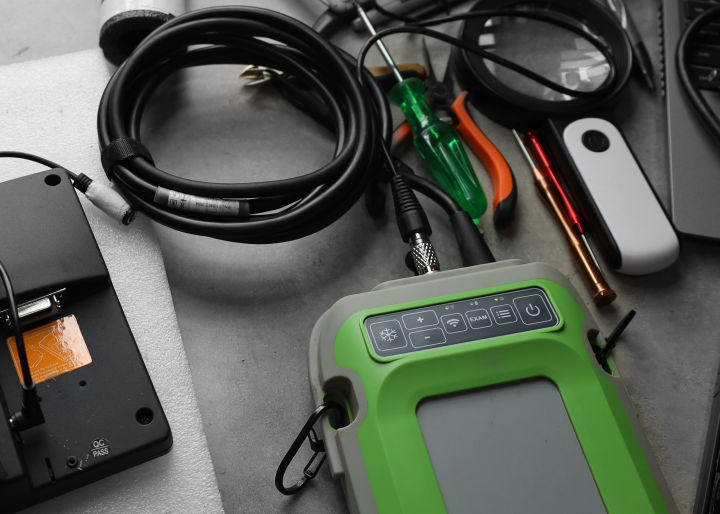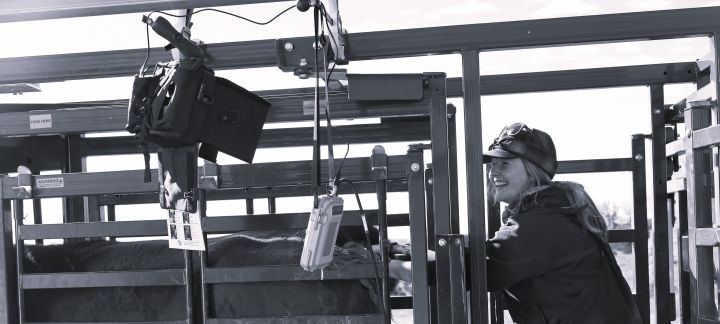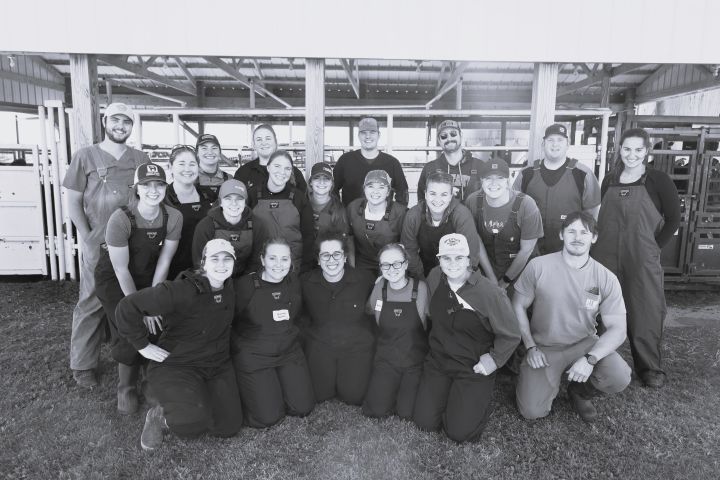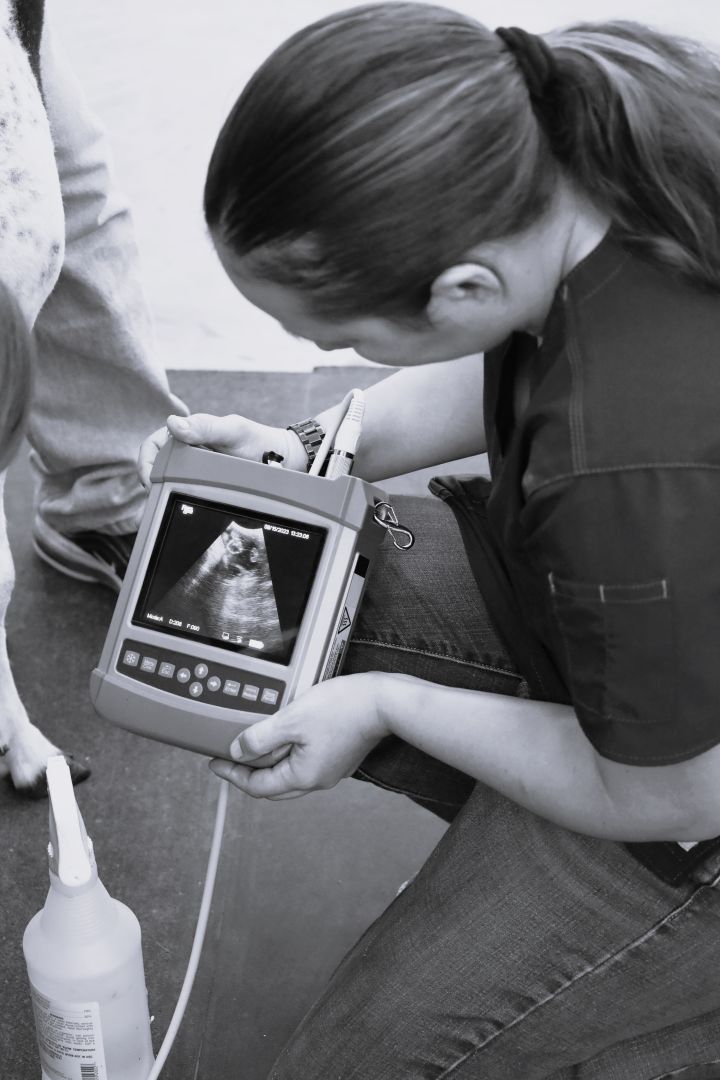November 2025

Doc Talk with Dr. Terhaar
Doc Talk with Dr. Terhaar Watch the video below as Dr. Terhaar explains what can be seen on the ReproScan 2.0 Monitor! As explained, Dr. Terhaar is taking a moment to study a fetus that is laying in a unique position. When a fetus is laying in a certain way, or their body is showing certain signs, it can mean something is specific. For this fetus, Dr. Terhaar took a couple extra seconds to ensure it was not schistosomus reflexus.

Checking Long-Bred, Deep-Bodied Cows with the ReproArm: A Practical Guide
It’s that time of year…the weather is getting cooler, and the cattle are longer bred. These can be much more challenging. Late-gestation cows are a different game compared to 45–90-day pregnancies. As pregnancy advances, the uterus drops ventrally and cranially (forward and down), fluid increases, and anatomy stretches away from easy reach. Add a deep bodied and fat animal, and you’re scanning farther, through more tissue, at steeper angles. The good news: with a ReproArm and a few smart setting tweaks, you can do it.

When's the last time you gave your ultrasound a little "TLC"?
Avoid a Horror Story in the Chute and Scare Off Costly Repairs with a Little Maintenance Magic: No Tricks, Just Tips: Preventative Maintenance That Pays Off ReproScan equipment is built for durability and performance — designed to work as hard as you do. But like any hardworking tool, your ultrasound system needs periodic maintenance to stay reliable and efficient. Regular checks can prevent small issues from becoming costly repairs or unexpected downtime.

A Letter from the Office
News from the ReproScan office - Including a Small Ruminant (DVM Only) Training Course There’s a new face around the ReproScan office—four paws, a wagging tail, and a heart full of energy! We’re excited to introduce Trigger, our new red retriever puppy. Small Ruminant CE Course Opportunity (DVM ONLY) - Benchmark Animal Hospital Benchmark Animal Hospital is hosting a 20 Race CE credit reproduction course. See below for all the details.
July 2025

When to Use the Shorty ReproArm vs. the Regular ReproArm
When to Use the Shorty ReproArm vs. the Regular ReproArm by ReproScan Reproductive ultrasound is all about efficiency, accuracy, and operator comfort — and having the right tools for the job makes all the difference. That’s why ReproScan offers multiple ReproArm options, including the standard Regular ReproArm and the more compact Shorty ReproArm. While both arms are engineered with ReproScan’s commitment to durability, simplicity, and affordability in mind, each is optimized for different working conditions and cattle types.

Battery Best Practices:
Your ReproScan ultrasound system is built to be simple, durable, and affordable — and that includes the powerful lithium-ion battery that keeps you scanning all day. To keep your battery healthy and your scanner working at peak performance, follow these quick battery care tips: ✅Charge Smart Charge fully, then unplug. Once your battery hits 100%, unplug it from the wall. Leaving it plugged in for extended periods can create heat buildup and gradually shorten battery life.

Why to Ultrasound Over Blood Test for Preg Checking
When it’s time to preg check your cows, the tools you choose matter — not just for knowing who’s bred, but for making better management decisions across the board. Blood testing might seem easy, but here’s the truth: You’re waiting for the results (minutes to days)… and those results can still mislead you. Studies show that residual pregnancy-associated glycoproteins (PAGs) can trigger false positives weeks or even months after a cow has lost a pregnancy.
May 2025

Calling All Vet Students - Especially New Graduates!
To all the incredible students finishing vet school — congratulations! You’ve reached a major milestone, and we couldn’t be more excited for you. At ReproScan, we’re passionate about supporting the next generation of veterinarians. As you step into practice, we’d love to stay connected. Our community is all about sharing helpful resources, CE event updates, exclusive offers, and real-world industry insights — and we want you to be part of it.

Why Do Some Pregnant Cows Fail to Calve?
Even the most experienced pregnancy testers know: not every cow confirmed pregnant ends up calving. So what’s happened? Here are a few key factors behind “failure to calve”: 1. Early Testing = Higher Loss Risk The earlier you test, the more likely some pregnancies won’t go to term. In dairy herds, ultrasound as early as day 28 can show viable embryos that ultimately don’t result in calves — often due to high production demands.

Small Ruminant Ultrasound: What You Need to Know
Over the past few months, we’ve seen exciting growth in the small ruminant industry—and with it, a rise in curiosity around small ruminant ultrasound. If you’ve been wondering how to get started or improve your technique, we’ve got you covered! Here are some key things to keep in mind when working with small ruminant ultrasound: 1. Probe Placement For most small ruminant ultrasounds, our go-to recommendation is the C60 T-Handle probe paired with the Flexx ultrasound system.